<< Previous | Displaying results 1801-1850 of 6769 for "" | Next >>
Many journalists, private citizens, and staff observed the historic events of the International Military Tribunal at Nuremberg from the visitors' gallery.
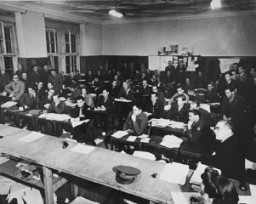
Beginning in 1979, the Office of Special Investigations (OSI) opened hundreds of investigations and initiated proceedings of Nazi war criminals. Learn more
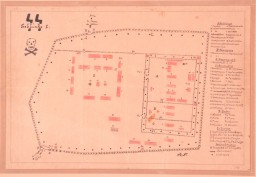
Martin Bormann, close assistant to Adolf Hitler, furthered an array of Nazi policies. He was tried in absentia during the International Military Tribunal at Nuremberg.
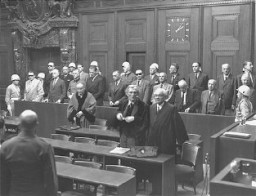
Brief overview of the charges against Karl Dönitz, German navy commander in chief, during the International Military Tribunal at Nuremberg.
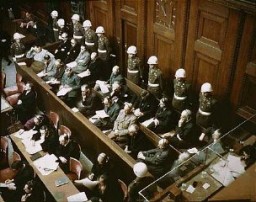
Brief overview of the charges against Hans Frank, Nazi governor general of occupied Poland, during the International Military Tribunal at Nuremberg.

Brief overview of the charges against Wilhelm Frick during the International Military Tribunal at Nuremberg. Frick was Reich minister of the interior 1933-1943.
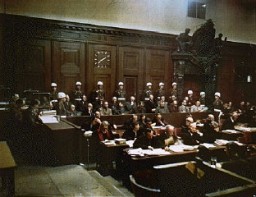
Brief overview of the charges against Hans Fritzsche, Nazi propaganda ministry official, during the International Military Tribunal at Nuremberg.

Brief overview of the charges against Walther Funk, economics minister and national bank president, during the International Military Tribunal at Nuremberg.

Brief overview of the charges against Rudolf Hess, one of the leading German officials tried during the International Military Tribunal at Nuremberg.

Brief overview of the charges against Alfred Jodl, chief of the German Armed Forced High Command, during the International Military Tribunal at Nuremberg.

Brief overview of the charges against Ernst Kaltenbrunner, Reich Security Main Office leader, during the International Military Tribunal at Nuremberg.
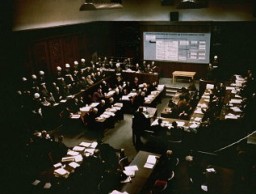
Field Marshal Wilhelm Keitel was commander of all German armed forces during World War II. Learn about his military career and postwar trial.
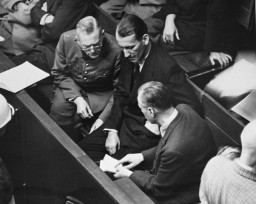
German industrialist Gustav Krupp von Bohlen und Halbach was one of 24 leading German officials charged at the International Military Tribunal.

Brief overview of the charges against Robert Ley at the International Military Tribunal at Nuremberg. Ley was founder of the German Labor Front (DAF).

Brief overview of the charges brought against German foreign minister Konstantin von Neurath during the International Military Tribunal at Nuremberg.

Franz von Papen was one of the leading German officials tried during the International Military Tribunal at Nuremberg. He was acquitted of all charges.

Brief overview of the charges against Erich Raeder, German navy commander in chief, during the International Military Tribunal at Nuremberg.

The charges against German foreign minister Joachim von Ribbentrop, negotiator of the German-Soviet Pact, during the International Military Tribunal at Nuremberg.

Explore a biography of Alfred Rosenberg, influential Nazi intellectual who held a number of important German state and Nazi Party posts.
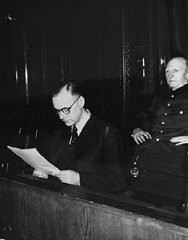
Brief overview of the charges against Fritz Sauckel, Nazi general plenipotentiary for labour deployment, during the International Military Tribunal at Nuremberg.

Brief overview of the charges against Hjalmar Schacht during the International Military Tribunal at Nuremberg, and denazification court proceedings.

Brief overview of the charges against Baldur von Schirach, Hitler Youth leader and Nazi leader in Vienna, during the International Military Tribunal at Nuremberg.

Brief overview of the charges against Arthur Seyss-Inquart, Reich Commissioner for the occupied Netherlands, during the International Military Tribunal at Nuremberg.

Architect Albert Speer joined the Nazi Party in 1930, becoming Hitler's personal architect. He was later Minister of Armaments and Munitions in Nazi Germany.

Brief overview of the charges against Julius Streicher, founder of the racist and antisemitic paper Der Stürmer, at the International Military Tribunal at Nuremberg.

The International Military Tribunal charged 24 defendants representing a cross-section of German diplomatic, economic, political, and military leadership.
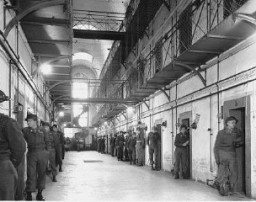
From 1945 to 1947, the US Army tried a variety of officials, camp personnel, and German civilians accused of war crimes and mass atrocities against Allied civilians and prisoners of war.
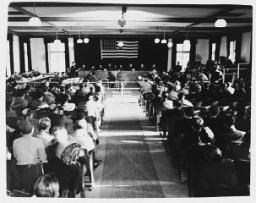
Irmgard Huber was head nurse of the facility at Hadamar, one of 6 major "euthanasia" killing centers in Nazi Germany. Learn more about her role.
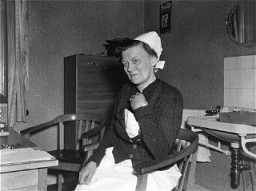
The Nuremberg trials were an early experiment in simultaneous translation. Learn about the principles and technology involved in translating the trial proceedings.
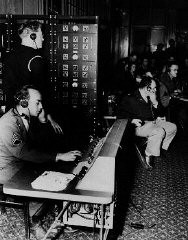
Efforts to hold some of the remaining perpetrators of crimes of the Holocaust accountable continue today, raising the question: is it ever too late to seek justice?
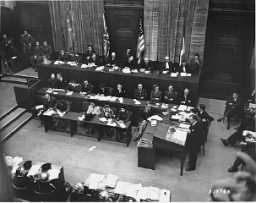
In the decades following the Holocaust, the search for perpetrators continued. As they reach the end of their lives, the vast majority of Nazi offenders have escaped punishment.
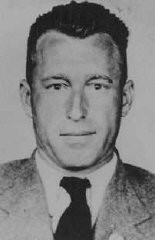
Holocaust survivor Simon Wiesenthal dedicated his life to raising public awareness of the need to hunt and prosecute Nazis who had evaded justice.
Thomas Buergenthal's experiences as Holocaust survivor and international judge shape his unique perspective on judging war crimes today and justice after genocide.
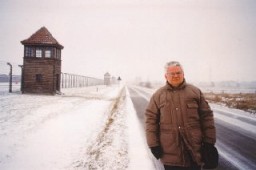
View an animated map showing key events of the Holocaust, the persecution and murder of 6 million Jews by the Nazi regime and its allies and collaborators.
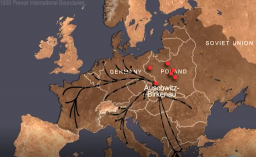
From 2003 to 2005, an estimated 200,000 civilians died as a result of a campaign of violence in Darfur by the Sudanese government. In 2004, the US Secretary of State called this violence a genocide.
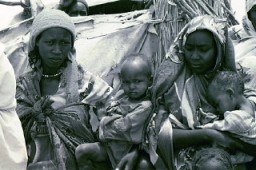
Explore Erika Eckstut's biography and learn about the difficulties and dangers she faced in the Czernowitz ghetto.
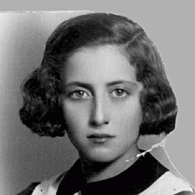
Explore Gideon Frieder’s biography and learn about his experiences as a child during the Holocaust in Slovakia.
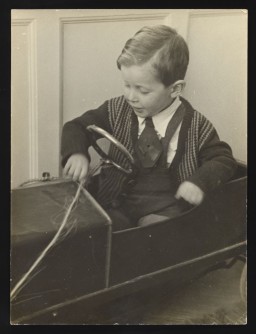
Explore Manya Friedmann’s biography and listen to her describe her experiences following the liberation of Auschwitz.
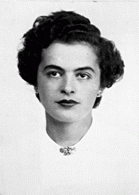
The Nazi regime’s Nuremberg Race Laws of September 1935 made Jews legally different from their non-Jewish neighbors. The laws were the foundation for future antisemitic measures .
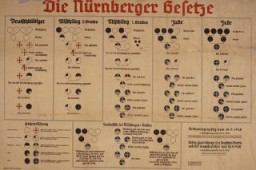
The Sicherheitsdienst (Security Service, SD) was a Nazi intelligence agency. Ideologically radical and part of the SS, it was a key perpetrator of the Holocaust.
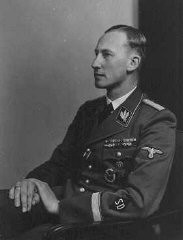
The July 20, 1944, plot was a failed attempt to assassinate Adolf Hitler. Learn more about the July 20 plot, including some of the motivations of the participants.
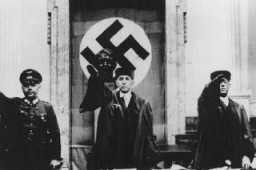
The 1936 Olympics in Berlin under Adolf Hitler's Nazi dictatorship were more than just a worldwide sporting event, they were also a show of Nazi propaganda.
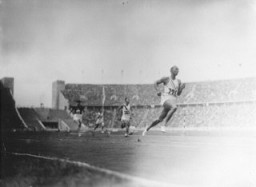
Nazi authorities established the Lodz ghetto in 1940. Learn about living conditions and forced labor in the ghetto, as well as deportations to and from there.
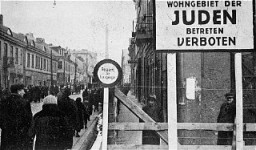
The Burmese military has targeted the Rohingya people because of their ethnic and religious identity. The military’s actions constitute genocide and crimes against humanity. Learn more
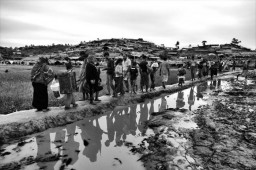
Almost one third of the six million Holocaust victims were murdered in mass shootings.
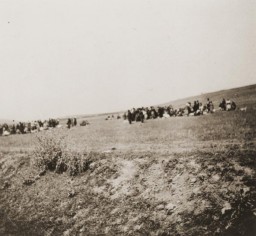
"We Will Never Die" was a 1943 musical stage performance that raised awareness among Americans about the murder of European Jews. Learn more.
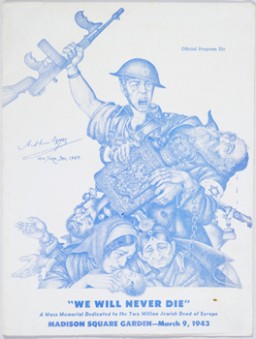
The Security Police (Sicherheitspolizei, SiPo) was a German police organization created by Heinrich Himmler. Learn about its origin and role in the Holocaust.

Jozef Tiso was a Slovak politician and a Roman Catholic priest. From 1939 to 1945, he was the president of the Slovak Republic, one of Nazi Germany’s allies.
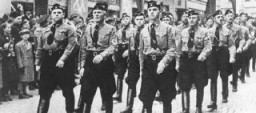
Budy was one of more than 40 subcamps that the SS administered as part of the Auschwitz camp complex. Learn more.
Syrets was a labor education camp established by the Germans outside of Kyiv. Learn more about Syrets prisoners and their daily life in the camp.
We would like to thank Crown Family Philanthropies, Abe and Ida Cooper Foundation, the Claims Conference, EVZ, and BMF for supporting the ongoing work to create content and resources for the Holocaust Encyclopedia. View the list of donor acknowledgement.